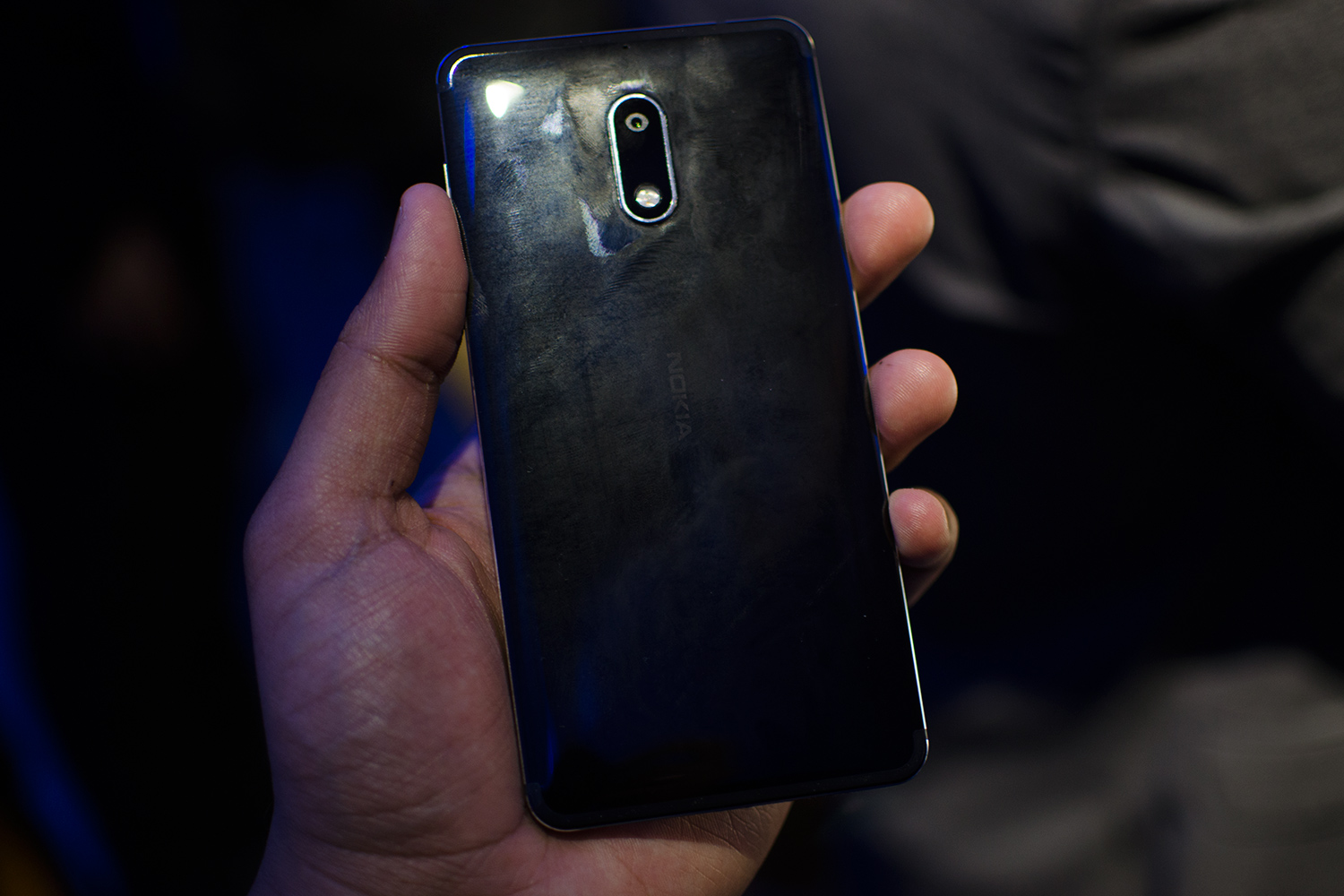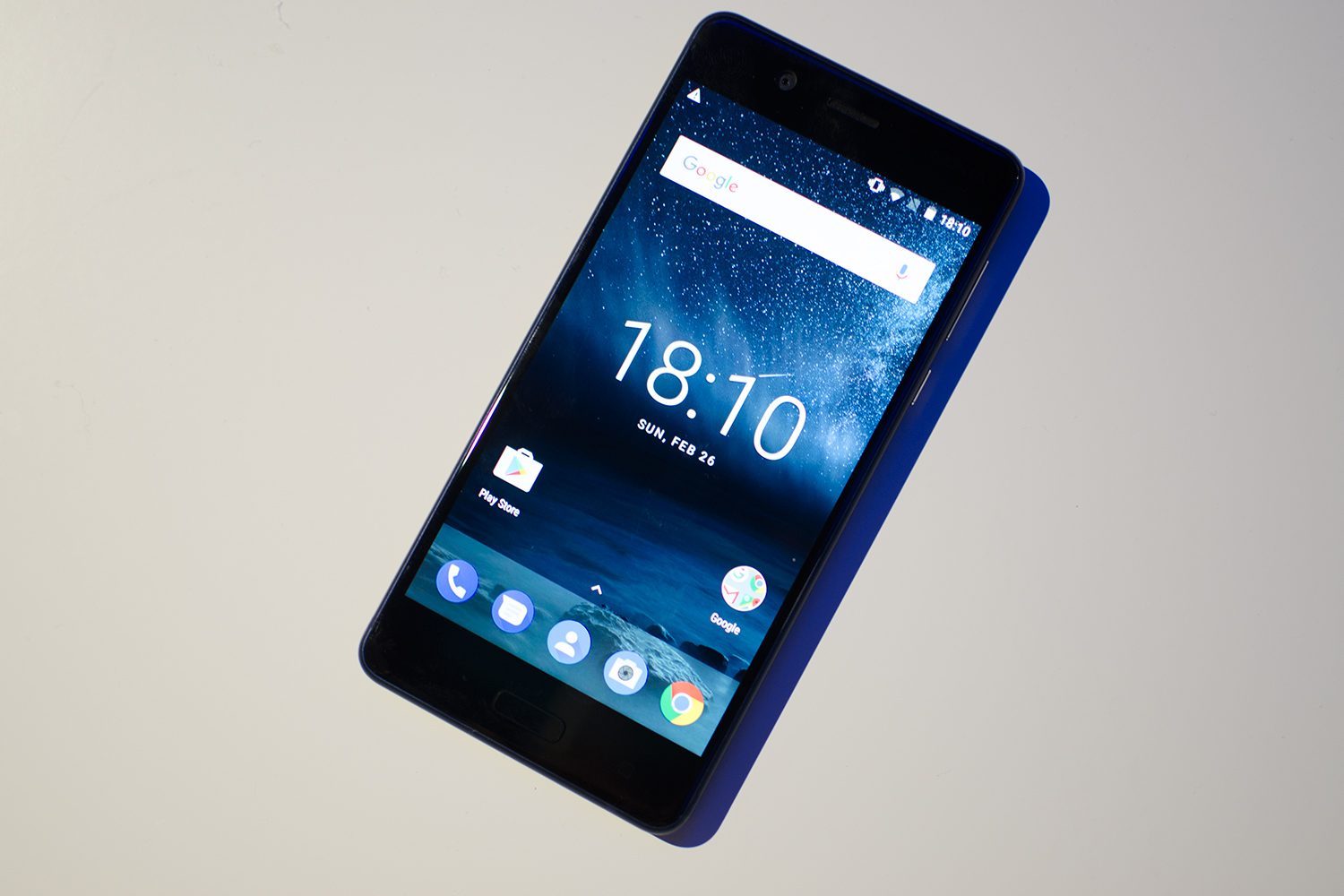HMD Global, the company licensing Nokia’s name, unveiled two new smartphones, as well as a feature phone to drum up the nostalgia factor for the iconic brand.
The Nokia 6, which first launched in China last year, will be available globally. It will be followed by two lower-performing and smaller devices — the Nokia 5 and the Nokia 3. HMD said it’s committed to keeping up with the monthly security updates from Google for the operating system, as well as being timely with new Android version updates.
Speaking of
All in all, the entire lineup seemed to be the best-built budget phones we’ve seen. Let’s take a closer look.
Nokia 6
The Nokia 6 debuted last year in China, but it will finally be available globally. If you need a refresher on the specs, the 5.5-inch device is the only one of the trio to feature a Full HD display. The phone’s immersive sound comes via dual speakers and a dedicated amplifier with Dolby Atmos certification.
The extra metal protection along the sides of the phone make it feel very durable, and the Nokia 6 truly does feel like a high-end phone, both in terms of hardware and software.
Running Android 7.1.1 Nougat, the Nokia 6 is powered by the same processor in the Nokia 5 — the Snapdragon 430 — but it has an extra gigabyte of
There are five colors to choose from, but the the glossy Arte Black was specially made for the phone’s global release. It’s quite the fingerprint magnet, though. Other available colors are black, blue, silver, and copper.
In the United States, the Nokia 6 will cost you $229. The U.S. variant is available through Best Buy, Amazon, AT&T, and T-Mobile-compatible matte black and silver.
Overseas, it’ll start at 229 euros ($242), but if you want the fancy Arte Black special edition, you’ll have to shell out 299 euros, or $316.
Nokia 5
The sequence of names really don’t make much sense, but it’s not hard to figure out that the Nokia 5 is the middle child of the group. The 2.5d glass on the 5.2-inch display offers a 720-pixel resolution, and it feels durable thanks to its aluminum unibody. The screen offers extra visibility in direct sunlight thanks to a polarizer.
The power button and volume rocker sits on the top right, and the bottom-front features capacitive navigation buttons. The middle button, however, doubles as a fingerprint sensor. The aluminum unibody really helps make this phone feel like a premium device — and you’ll certainly be surprised that it costs 189 euros (or about $200 U.S.).
Powering the smartphone is Qualcomm’s Snapdragon 430 with 2GB
It sadly only comes with 16GB of internal storage, which is much lower than the standard offerings from phones in this price range. Thankfully, there’s a MicroSD card slot that supports up to 128GB of extra storage. It surprisingly has a massive 3,000mAH battery, which should keep this low-resolution device chugging along for quite a while.
There’s only a single speaker (but thankfully a headphone jack), and at the bottom sits a MicroUSB charging port. It’s unclear why Nokia went with MicroUSB over USB Type-C, which a lot of other budget phones have adopted. At least there’s an NFC sensor, meaning you can use
The rear camera packs 13 megapixels, and the front has 8 megapixels and a wide-angle lens. There didn’t seem to be much shutter lag, but we’ll have to explore the camera more when we get a review unit.
You can choose from blue, copper, black, and silver for the Nokia 5.
Nokia 3
The Nokia 3 is the most affordable of the lineup and also the smallest. An aluminum frame protects the 5-inch screen from accidental drops, but the back is made of polycarbonate. What’s remarkable is how Nokia makes this phone feel like it’s made of metal, as there’s a nice weight to it.
Like the others in the series, the Nokia 3 follows a minimalist design. The back is plain, save the camera; the buttons are on the right, and you’ll find capacitive navigation buttons on the front.
Like the Nokia 5, the device only has a 720-pixel resolution. It has a MediaTek 6737 processor with 2GB of
The front and rear cameras both pack 8 megapixels, though the primary one has an LED flash.
This Nokia 3 runs
All three devices seemed to perform well, but what’s unique is their build quality. HMD seems to have gone extra lengths to make sure Nokia devices are still known for their durability. The devices also seem to have big batteries — when paired with low-end specs, that usually means you’ll see great battery life. We’ll have to dig deep when we get our review units.
All three phones have launched in India, and are expected to launch in other countries in the near future, though we don’t yet know where. The Nokia 3 is available in India for 9,499 rupees, or $148, while the Nokia 5 is available for 12,899 rupees, or $200, and the Nokia 6 for 14,999 rupees, or $233.
Highs
- Excellent build quality
- Stock Android
- Promise of monthly security updates, timely version updates
- Snappy performance
Lows
- Design can be a little plain
- Poor internal storage capacity
Update: The Nokia 6 is now available at Best Buy.


















